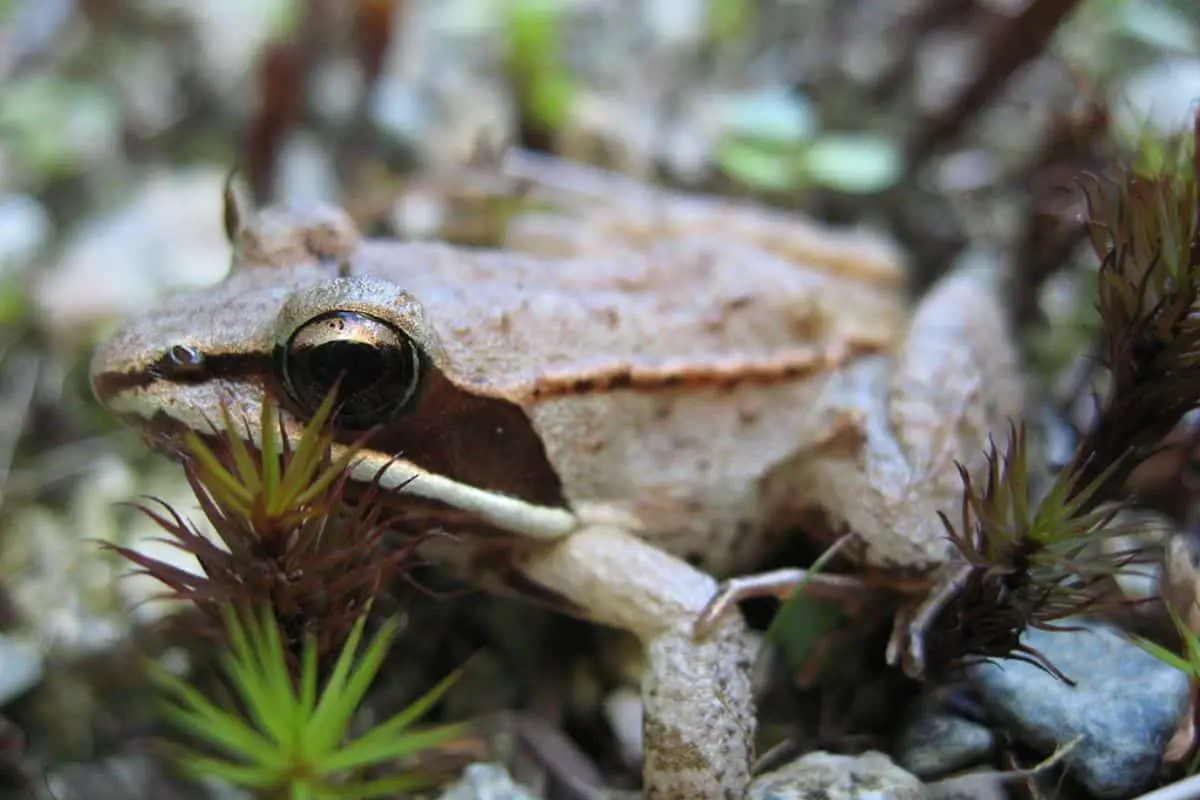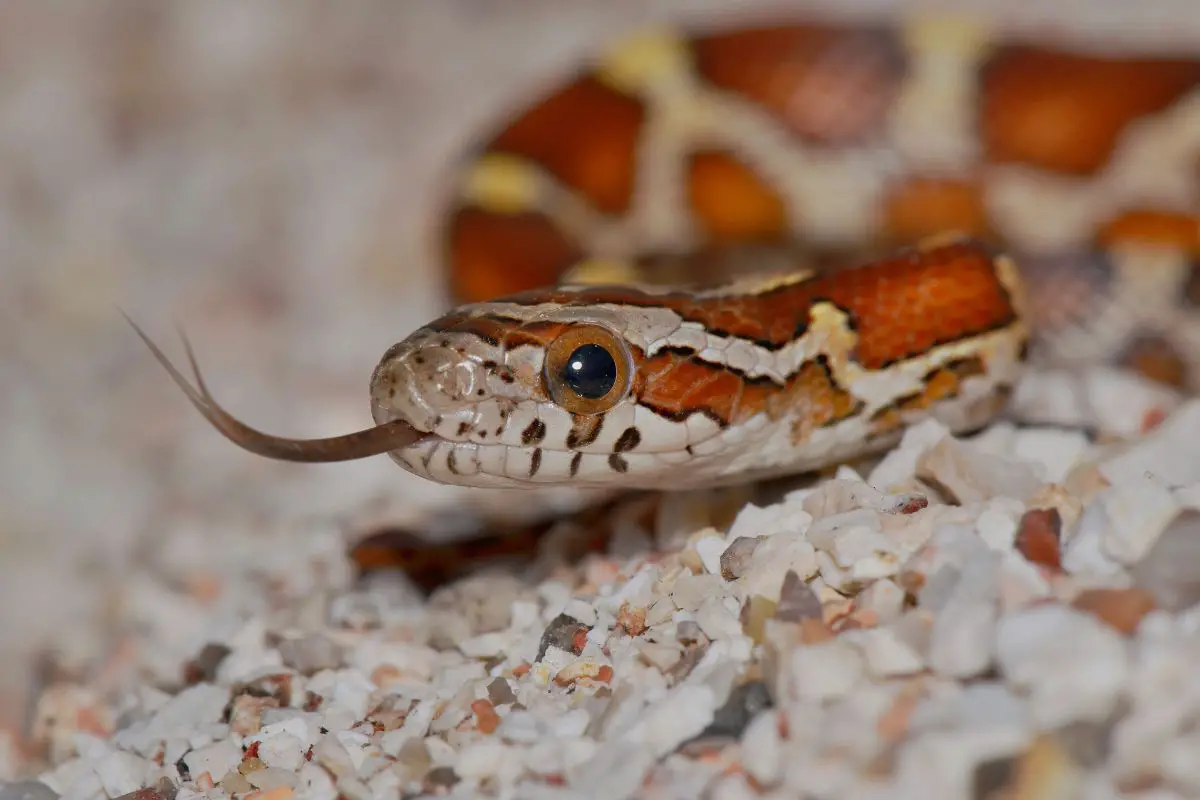Wood frogs are the only species of frogs that live as far north as Canada and Alaska. They have earned their name because they blend into wooded environments. In this article we have compiled a list of 15 interesting facts about wood frogs. Follow along as we learn more about these fascinating amphibians.
15 Facts about Wood Frogs
Wood frogs have several color variations to camouflage into leaf debris in wooded areas. They’re usually brown, red, gray, green, or variants of those colors. Wood frogs range in size from 1.5 to 3.25 inches. Like most frogs, females are significantly larger than males. Check out this list of 15 facts about these interesting amphibians!
1. They Live Further North Than Any Other Amphibian
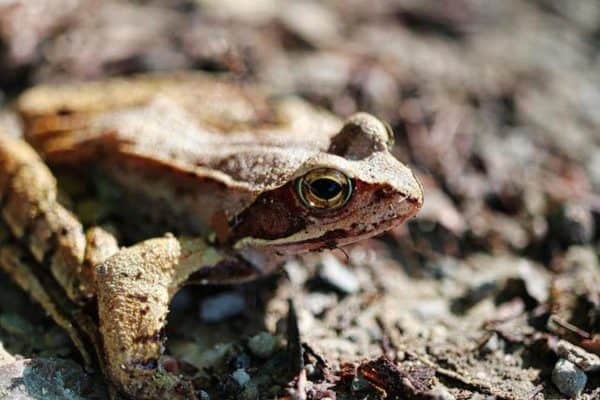
Wood frogs are the only frogs native to Alaska and part of Canada. Living so far north, they endure some of the most extreme temperatures of any amphibian or reptile.
These frogs have adapted to survive the harsh winter conditions closer to the Arctic Circle. We will talk more later about how they can live through freezing temperatures.
2. It’s The Official State Amphibian For New York
The State of New York did not have an official amphibian until recently. Surrounding states like Pennsylvania have different species of frogs as official state amphibians.
In 2018, the state assembly introduced a bill to make the wood frog New York’s official state amphibian. This was done because a 13-year-old student wrote a letter in 2013 to a senator.
3. They Freeze During Winter

Wood frogs don’t just hibernate through the winter. They literally freeze, and, by all clinical definitions, they die by shutting down their entire system, including the heart and brain activity.
These frogs have natural anti-freeze in their blood that keeps them from freezing solid. Ice actually form in their body to protect them. In spring, wood frogs thaw and come back to life.
4. They Immediately Start Breeding In Spring
When wood frogs emerge from the frozen winter, they immediately begin mating. They waste no time finding a mate when the weather warms in spring.
In fact, wood frogs are some of the first frogs to begin the mating season. They start breeding in early March and continue through May. Tadpoles and froglets emerge in the summer.
5. They Make A “Quacking” Call During Mating Season
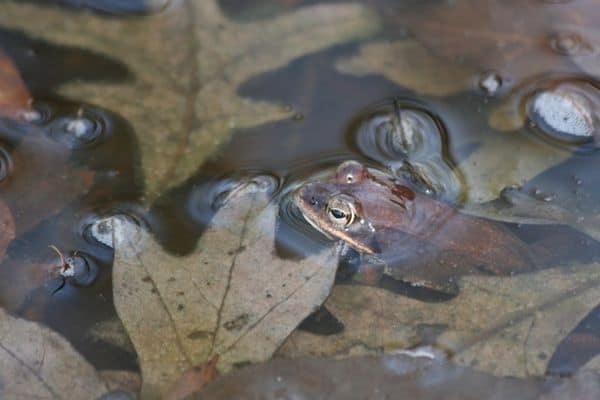
Wood frogs are usually quiet when it’s not mating season. However, during mating season, males project loud quacks and trilling clucks.
They make the quacking calls from the water to attract females. Females will choose a mate based on these calls.
6. Males Can’t Tell If Another Wood Frog Is Male Or Female
A funny thing about male wood frogs is they can’t tell the difference between another male and a female. They get so excited with another frog they just latch on their back.
Males can only tell the difference once they latch onto a potential mate. Females tend to be larger and let males stay on. Other males will wrestle off the unwelcome advances.
7. Tadpoles Eat Other Wood Frog Eggs
Wood frog tadpoles mostly feed on algae, plant matter, and tiny insect larvae. However, they’ve been known to eat their own.
Tadpoles will eat other wood frog eggs. Even though they’re primarily herbivores, wood frog tadpoles can be cannibalistic if food is scarce.
8. Females Lay Over 1000 Eggs
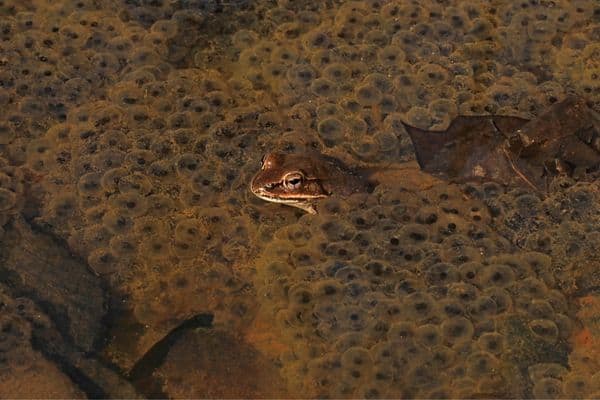
Typically, a female wood frog lays about 800 to 900 eggs per clutch. Depending on conditions, they can lay as few as a couple hundred or as many as 1,500 eggs at a time.
The jelly-like egg mass can be about the size of a softball. Female wood frogs lay their eggs next to a tree or branch that the egg mass attaches to for camouflage.
9. Multiple Females Lay Eggs Together
Egg mass in ponds can grow pretty large in size when multiple females occupy an area. Masses can reach 3,000 eggs or more.
This increases the chances of tadpoles and baby frogs surviving adulthood. It also contributes to the huge populations of wood frogs in North America.
10. They Have An Attack Reflex
Wood frogs are carnivores and also predators. They use their sticky tongue to grab insects and other small prey.
These frogs have an instinctual attack reflex. This means if they detect any kind of movement that could potentially be prey, they lunge and whip out that sticky tongue.
11. They Have Nearly 360-Degree Field Of Vision
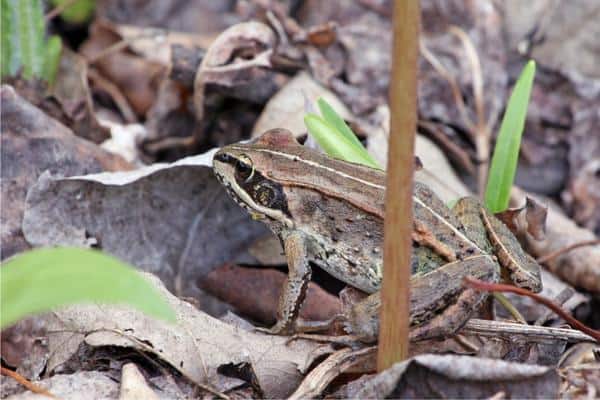
With the position of their eyes, wood frogs can see all around their body without ever moving their head. They have a field of vision that is 360 degrees.
This allows them to see predators sneaking up from behind. The frog can escape before the predator knows it’s been seen.
12. They Have Hyperoptic Vision Underwater
You know how everything is blurry underwater when you swim? That’s called myopic vision. Underwater frogs have hyperopic vision and can see perfectly and clearly.
Wood frogs experience myopic vision when their eyes are above water. This is why they have to rely on movement to attack prey.
13. They Wear A Mask
You can identify a wood frog by the mask it’s wearing. They wear what looks like a “robber’s mask” that goes from their eyes to the side of the head.
Wood frogs also have dorsolateral folds, that are two raised ridges that go from their eyes to their back.
14. They Secrete Toxins

While they’re not poisonous to humans, wood frogs secrete a toxin from their skin as a defense mechanism. This defense is meant to protect the frog from predators.
Animals like raccoons, water snakes, and herons are the main threat to wood frogs. The toxins could be deadly to one of these predators if ingested.
15. They Live For About 3 Years
Wood frogs have a relatively short lifespan. They only live about 3 years in the wild but can live up to 5 years.
The primary threat to wood frogs is habitat loss due to deforestation and pollution. Tadpoles die from polluted water sources, and human encroachment continues to be a problem.
